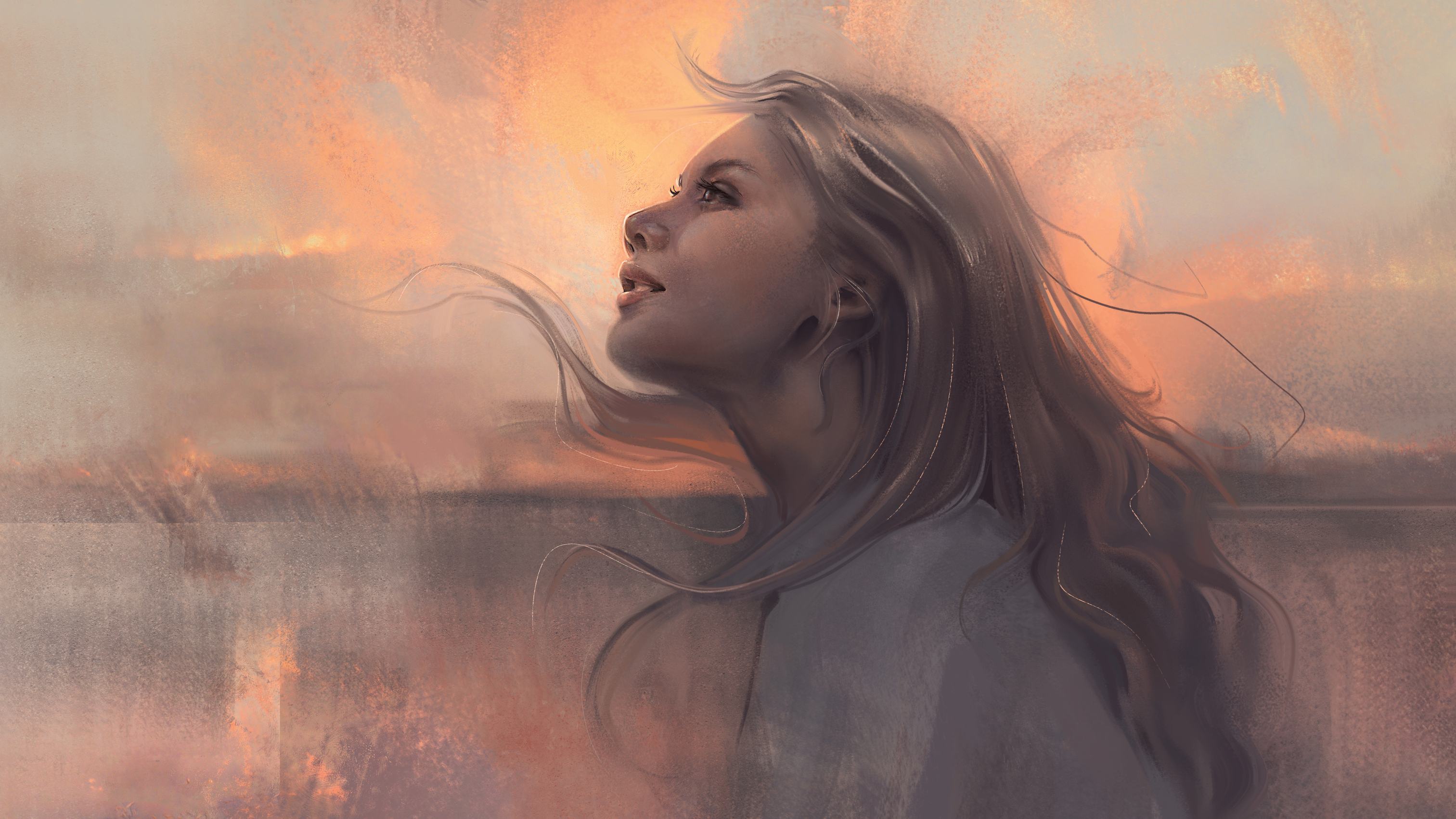9 lessons from the world's top viral images
What the most successful viral images can teach us.
Creating a 'viral campaign' may be a common client request, but it's rarely that simple – especially if that's the primary goal from the outset, and it ends up feeling forced and desperate.
In short, people share infectious content with friends and family because they want to – not because you want them to.
An image or piece of content may go viral when you least expect it, because it captures people's imagination or sense or humour at a given point in time, or stirs the kind of universal debate that can spread globally very quickly.
Read on to discover nine lessons that can be learned from some of the most popular viral images of recent years, to help you use images more effectively in social campaigns for your clients...
01. Tricks of perspective can be hilarious
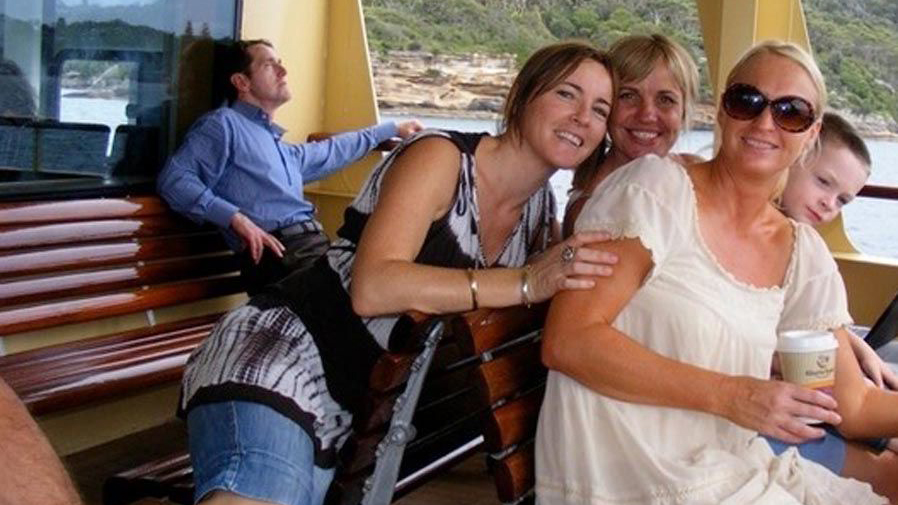
Sometimes serendipity comes into play, and a perfectly unassuming, above-board holiday snap can be transformed into a shareable sensation.
There are so many double-take perspective tricks amongst the world's most popular viral images, ranging from the lewd to the quite surreal.
This particular example – in which a thoughtful-looking man reclining on a bench, hand on hip, is transformed effortlessly into a vertically-challenged cowboy riding on a woman's back – is all down to a perfectly placed black strip on her top.
What can we learn from this? That tricks of perspective, and particularly those that require a double- or even triple-take, are infectiously shareable. But they're not always planned, and are usually funnier when they're not.
02. Everyone loves to challenge their friends
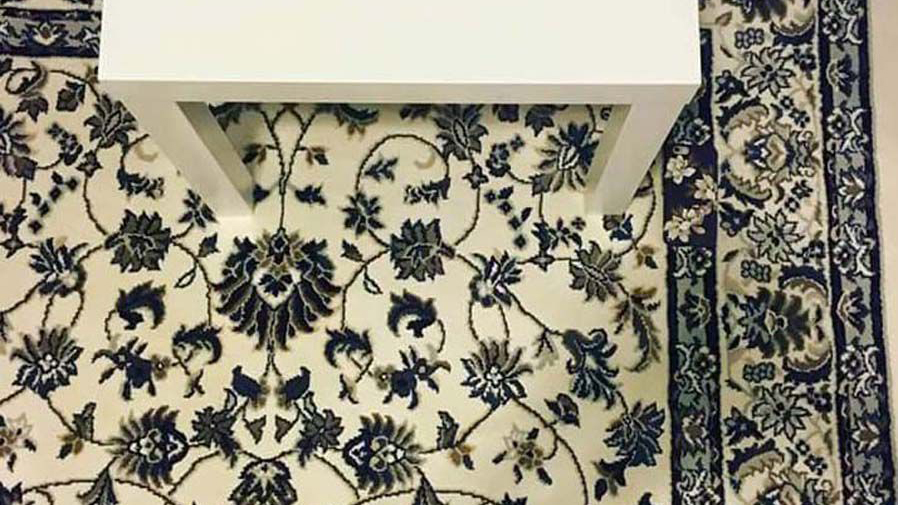
Another incredibly shareable type of viral image is the brain-teasing challenge, which often manifests itself in a 'can you spot?' format.
The example above – in which a mobile phone in a dark, flowery case is artfully placed onto a very similarly patterned carpet – certainly proves the point.
The lesson here is that optical illusions, particularly those that are infuriatingly challenging, get shared – and the chat between those smug few who solve it quickly, and the frustrated many who don't, keeps things going.
03. Animals with human emotions are addictive
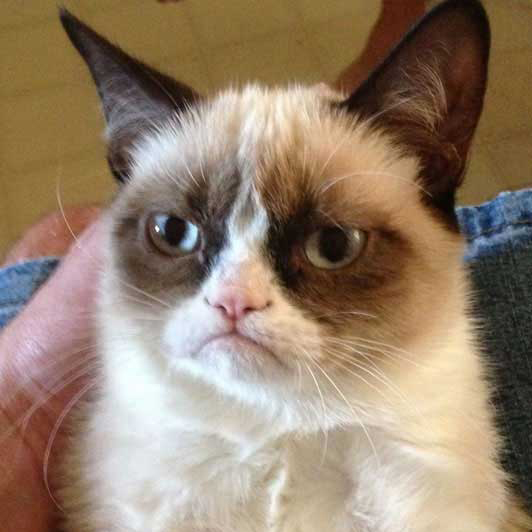
Who would have predicted that animals, and particularly cats, would mix so well with the internet? Thousands of memes later, the point has been proven.
Grumpy Cat is nothing short of an internet phenomenon, who shares a manager – Ben Lashes – with fellow feline sensations/annoyances Keyboard Cat and Nyan Cat.
There's got to be a lesson in there, surely? One thing's for sure: anthropomorphic animals, particularly if they pair well with cute or snarky memes, spread like wildfire. But that sweet spot isn't easy to find, and it's crowded out there.
04. Sometimes a facial expression changes everything
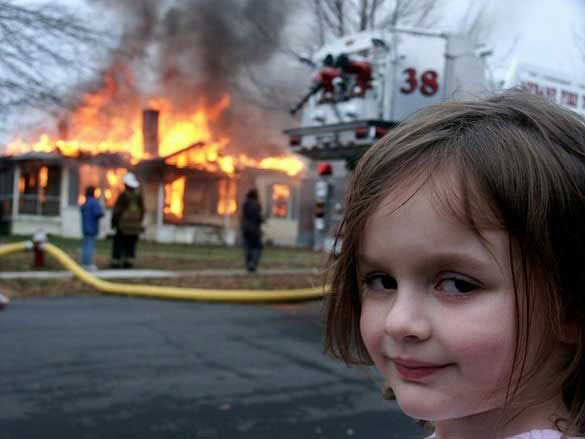
A photo of a building on fire is shocking, and newsworthy, in itself – but it's unlikely to go viral in and of itself, especially if it's a small fire that's seemingly under control, with the fire brigade doing their jobs.
With a child in the foreground, that same shot may be transformed, depending on the context. It could become life-affirming, tragic, or heroic.
But the subtlest change of facial expression could make all the difference. The young girl in the shot above has such a knowing, calculating, mischievous smile in the moment the photo was captured, that the whole tone of the image changes.
Ironic twists, unexpected flashes of meaning and dark humour can make an image so much more shareable. 'Disaster Girl' became a meme, juxtaposed with famous tragedies the world over with her devilish grin.
05. Photobombs are a lot funnier with animals
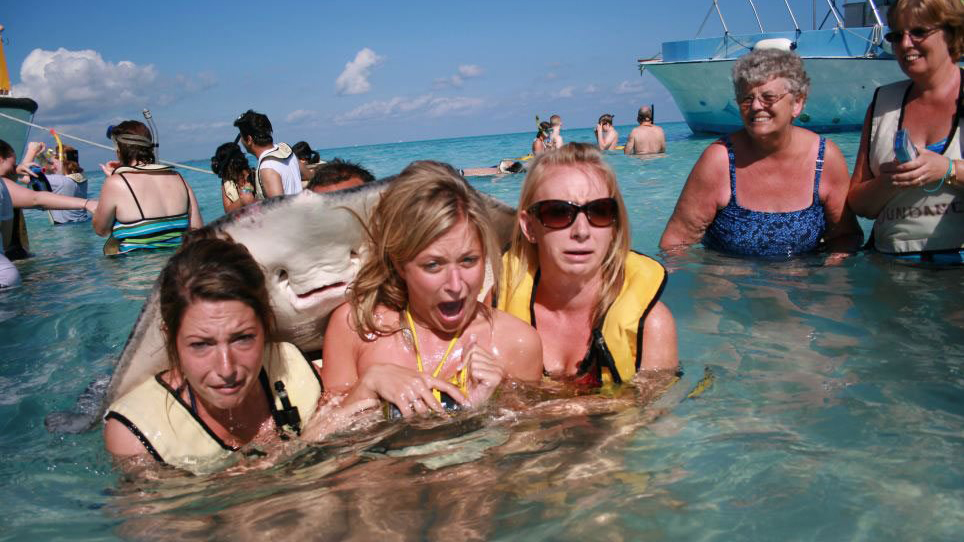
Rather like the tricks of perspective in lesson one, photobombs are always funnier and more shareable when they happen accidentally.
With a few exceptions, no one wants to share a snap of someone deliberately sabotaging a shot with a goofy grin on their face – depending on who's doing the photobombing of course; celebrities are a different story.
If your photobomber is an animal, you find yourself with the best bits of lessons one and three. Take the example above, where the hilariously human-looking face on a playful mantra ray, peeking over the shoulders of three terrified holidaymakers, makes the shot something truly special.
The lesson here: look for natural, spontaneous and authentic humour to be found in totally random encounters, and treat anything that combines two or more of the lessons on this list like gold dust.
06. A single image can represent a powerful movement
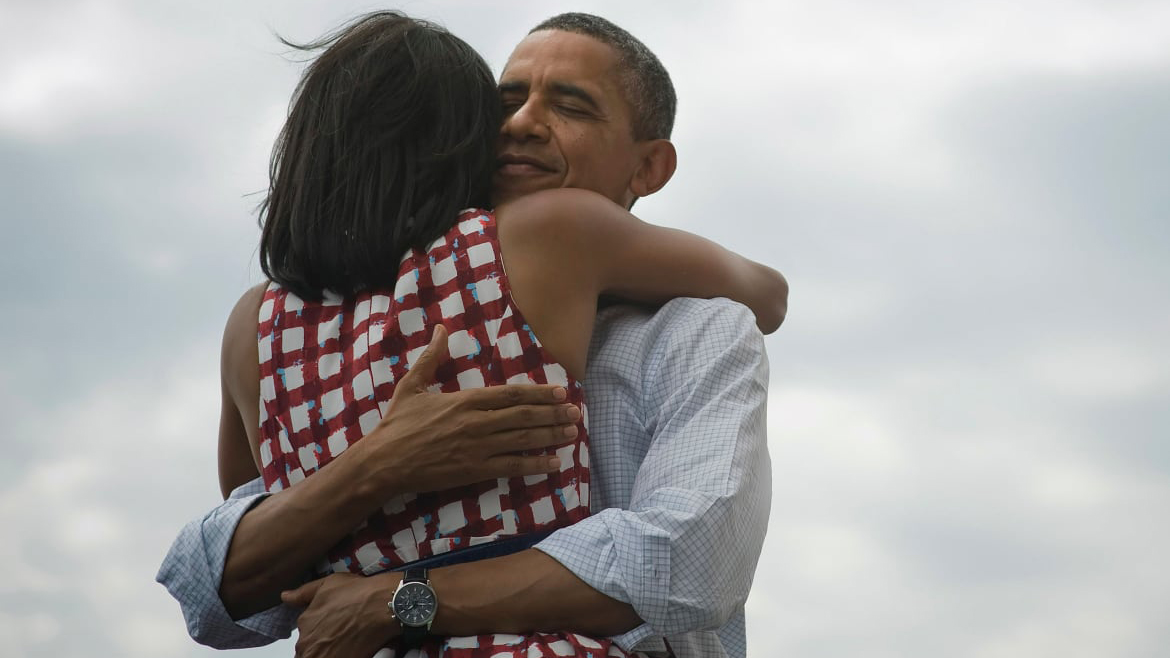
When it comes to political campaigns, images are often designed to be persuasive – and in extreme cases, are little more than manipulative propaganda. A viral image with political roots is often shared to argue an overt point, or reinforce an ideology, rather than just because people enjoy it.
So the fact that one of the most successful 'political' virals of all time depicts Barack and Michelle Obama sharing a loving embrace is all the more impressive.
Circulated after it was beyond doubt that Obama had won "four more years", the image is filled with love, pride, determination and relief in equal measure – and it nearly broke the internet.
The web is notoriously snarky and tends to favour dark humour and playfulness over sentimentality in viral images – but when there's enough groundswell behind a movement, something beautifully simple and authentic can be all it takes.
07. Anything that divides public opinion is sharable
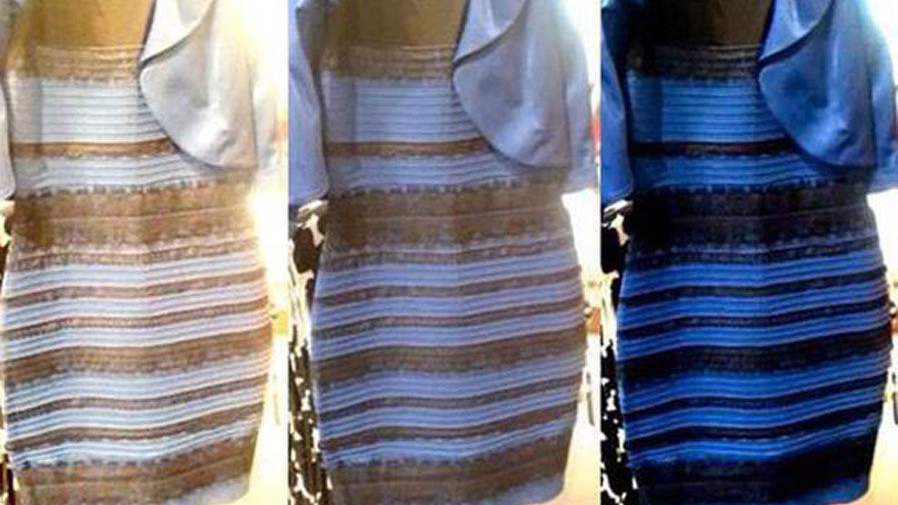
Before 'Laurel or Yanny' there was The Dress, and it proved just how much attention can be drummed up by anything that splits public opinion down the middle.
The fairly crude, lo-res snapshot at the heart of #TheDress phenomenon was originally posted on Tumblr by Caitlin McNeill, after she noticed how her friends saw different colours: either blue and black, or white and gold.
Rather like lesson two, where the challenge to solve a near-impossible brainteaser is too great to resist, the notion that your own brain's perception will either put you in one camp or another is infectious.
Once the A-Listers started getting involved – from Kim and Kanye to Taylor Swift – the image's viral credentials were well and truly cemented.
08. Visual illusions are hugely compelling
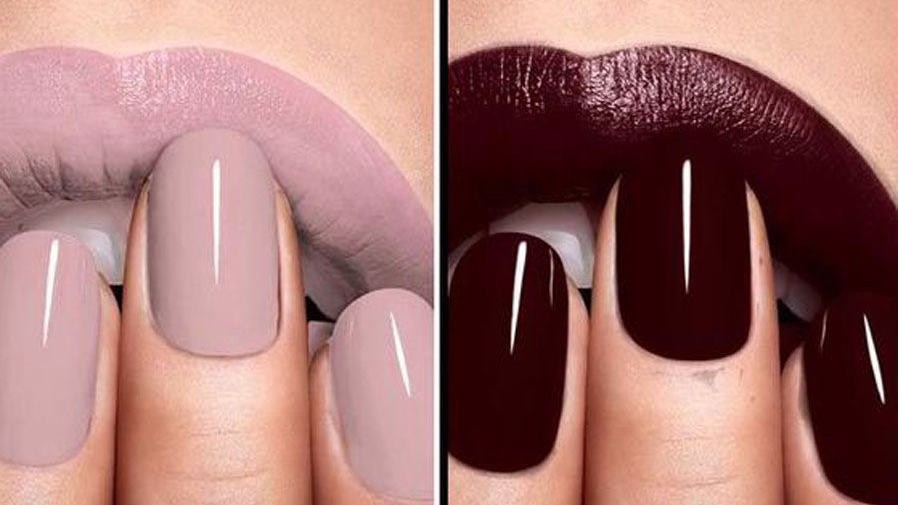
Hot on the heels of #TheDress came this similarly baffling visual illusion, which hooked you in with this confounding premise: both are the same colour.
However, this time the viral nature of the image was fabricated, rather than relying on the varying colour perception of the human eye. Thanks, Photoshop.
Twitter users were invited to click on the light pink image (left) to enlarge it, only for it to transform into a rich shade of burgundy (right). The trick? The image is semi-transparent, so a white or black background totally transforms its overall look.
Play it right, and a smoke-and-mirrors, man-made optical illusion can be every bit as effective as a natural one. And people will share it in their thousands.
09. Don't underestimate simple visual wit

We'll leave you with this ninth and final image, which above all else shows the power of simple visual wit to help an image go viral.
Ostensibly just a snap of a rotund sunbather on the beach, the fact that his portly silhouette is perfectly echoed by the landscape behind makes it a keeper.
Related articles:

Thank you for reading 5 articles this month* Join now for unlimited access
Enjoy your first month for just £1 / $1 / €1
*Read 5 free articles per month without a subscription

Join now for unlimited access
Try first month for just £1 / $1 / €1
Get the Creative Bloq Newsletter
Daily design news, reviews, how-tos and more, as picked by the editors.

Nick has worked with world-class agencies including Wolff Olins, Taxi Studio and Vault49 on brand storytelling, tone of voice and verbal strategy for global brands such as Virgin, TikTok, and Bite Back 2030. Nick launched the Brand Impact Awards in 2013 while editor of Computer Arts, and remains chair of judges. He's written for Creative Bloq on design and branding matters since the site's launch.
